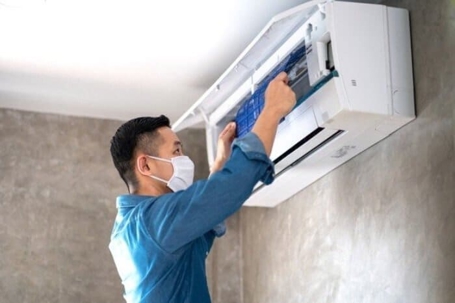As temperatures soar during the summer, the last thing anyone wants is their air conditioning unit to fail. Regular maintenance of air conditioning systems is crucial to ensure they run efficiently, prolong their lifespan, and provide optimal cooling when needed most. For HVAC professionals, having a comprehensive AC maintenance checklist is essential for delivering top-notch service and fostering strong client relationships built on trust and reliability. This article outlines the critical tasks HVAC professionals should include in their AC maintenance checklist, providing insights and practical advice for each task. By following this guide, technicians can ensure that every service AC unit operates at peak performance.
Importance of AC Maintenance
Before diving into the specifics of the checklist, it’s vital to understand why AC maintenance is essential. Many homeowners underestimate the benefits of regular HVAC maintenance, often viewing it as an unnecessary expense. However, neglecting AC systems can lead to a range of issues, including:
- Reduced Efficiency: Over time, dust, dirt, and debris can accumulate in an AC unit, obstructing airflow and decreasing efficiency. This can lead to higher energy bills as the system works harder to cool the space.
- Increased Repair Costs: Many minor issues can escalate into major problems if not addressed promptly. Regular maintenance allows technicians to identify potential issues before they require costly repairs.
- Shortened Lifespan: Like any other mechanical system, air conditioners have a finite lifespan. Regular maintenance can extend this lifespan, allowing homeowners to get the most out of their investment.
- Improved Indoor Air Quality: A well-maintained AC system helps filter out pollutants and allergens, improving the air quality in the home. This is particularly important for individuals with allergies or respiratory issues.
- Enhanced Comfort: A properly functioning AC unit ensures that temperatures remain consistent and comfortable, providing a better living environment for occupants.
With these benefits in mind, let’s delve into the essential tasks that should be part of every HVAC professional’s AC maintenance checklist.
AC Maintenance Checklist Tasks
Inspect and Replace the Air Filter
Task Details: The air filter is one of the most critical components of an AC system. It traps dust, dirt, and other particles, preventing them from circulating through the home. Clogged filters can restrict airflow, reducing efficiency and increasing strain on the system.
How to Perform the Task:
- Inspect the air filter during every maintenance visit.
- If it appears dirty or clogged, replace it with a new one. Depending on the type of filter used, this may need to be done monthly, quarterly, or biannually.
Tips:
- Encourage homeowners to check their filters regularly and replace them as needed.
- Suggest using high-efficiency filters for better air quality and improved system performance.
Clean the Coils
Task Details: The evaporator and condenser coils are crucial in cooling. Dust and debris can accumulate on these coils, leading to inefficiency and overheating.
How to Perform the Task:
- Turn off the power to the AC unit before cleaning.
- Use a soft brush or vacuum to remove dirt from the coils.
- A specialized coil cleaner can be used for stubborn grime, following the manufacturer’s instructions.
Tips:
- Remind homeowners to keep the area around the outdoor unit clear of debris, as this can improve airflow and efficiency.
Check Refrigerant Levels
Task Details: Low refrigerant levels can indicate a leak and significantly affect an AC unit’s cooling performance. Proper refrigerant levels are crucial for efficient operation.
How to Perform the Task:
- Use a gauge to check the refrigerant levels in the system.
- If levels are low, locate the source of the leak, repair it, and recharge the system as necessary.
Tips:
- Educate homeowners about the importance of addressing refrigerant leaks promptly. They can lead to environmental harm and increase energy costs.
Inspect the Thermostat
Task Details: A malfunctioning thermostat can lead to improper temperature regulation, discomfort, and inefficiency.
How to Perform the Task:
- Check the thermostat settings and calibration.
- Test the thermostat by setting it to different temperatures and observing the system’s response.
Tips:
- Encourage homeowners to upgrade to a programmable or smart thermostat for enhanced control and energy savings.
Clean and Inspect the Drain Line
Task Details: The condensate drain line removes moisture from the air conditioning system. A clogged drain can lead to water damage and mold growth.
How to Perform the Task:
- Inspect the drain line for blockages.
- Use a wet/dry vacuum or a plumber’s snake to clear clogs.
- Ensure that the drain is functioning correctly by running water through it.
Tips:
- Recommend that homeowners consider using a drain line treatment solution to prevent future clogs.
Inspect Ductwork
Task Details: Properly functioning ductwork is essential for efficient air distribution. Leaks or blockages can reduce airflow and increase energy costs.
How to Perform the Task:
- Inspect ducts for visible signs of damage or disconnections.
- Use a smoke pencil to detect leaks.
- Seal any leaks with mastic sealant or duct tape as needed.
Tips:
- Suggest regular duct cleaning for homes with pets or high dust levels to maintain optimal airflow and air quality.
Check Electrical Connections
Task Details: Over time, electrical connections in an AC unit can become loose, leading to operational issues or safety hazards.
How to Perform the Task:
- Inspect all electrical connections, including wiring and terminals.
- Tighten any loose connections and look for signs of corrosion.
Tips:
- Advise homeowners to schedule regular electrical inspections to avoid potential hazards.
Lubricate Moving Parts
Task Details: Many components in an AC unit have moving parts that require lubrication to operate smoothly. Lack of lubrication can lead to increased wear and tear.
How to Perform the Task:
- Identify motors, fans, and other moving parts that require lubrication.
- Use a manufacturer-recommended lubricant to oil these components.
Tips:
- Emphasize the importance of regular lubrication to prevent mechanical failures.
Inspect Blower Components
Task Details: The blower motor moves air through the duct system. Issues with the blower can lead to inadequate airflow and decreased efficiency.
How to Perform the Task:
- Inspect the blower wheel and motor for dust buildup.
- Clean the blower wheel to ensure optimal airflow.
- Check the motor for proper operation and lubrication.
Tips:
- Encourage homeowners to be aware of any unusual noises, as they can indicate problems with the blower.
Test System Operation
Task Details: After performing maintenance tasks, it’s essential to test the entire system to ensure it operates correctly.
How to Perform the Task:
- Turn the system on and set the thermostat to the desired temperature.
- Monitor the system’s performance, checking for any unusual noises or issues.
Tips:
- Advise homeowners on what to expect during regular operation so they can recognize any changes that may indicate a problem.
Conclusion
Incorporating these essential tasks into a comprehensive AC maintenance checklist is vital for HVAC professionals looking to provide exceptional service. Regular maintenance enhances the efficiency and lifespan of air conditioning systems and ensures that homeowners enjoy a comfortable and healthy living environment. By diligently performing these tasks, HVAC professionals can build strong relationships with their clients, demonstrating their commitment to quality and reliability.
Furthermore, educating clients about the importance of routine maintenance can empower them to take a proactive approach to caring for their AC systems. When customers understand the value of regular maintenance, they are more likely to schedule services consistently, leading to fewer emergency repairs and increased satisfaction.
Maintaining a detailed AC maintenance checklist can set HVAC professionals apart in an industry where trust and expertise are paramount. With this guide in hand, technicians can confidently approach each service call, knowing they are equipped to keep air conditioning systems running smoothly for years to come.
FAQs
1. How often should I schedule AC maintenance?
It’s recommended to schedule AC maintenance at least once a year, ideally before the cooling season begins. This ensures your system is ready to handle the summer heat efficiently.
2. What are the signs that my AC needs maintenance?
Signs include unusual noises, reduced airflow, inconsistent temperatures, higher energy bills, and unpleasant odors. If you notice any of these issues, it is best to schedule maintenance promptly.
3. Can I perform AC maintenance myself?
While some basic tasks, like changing the air filter, can be done by homeowners, comprehensive maintenance is best left to professionals who have the tools and expertise to handle more complex issues safely.
4. What happens if I neglect AC maintenance?
Neglecting maintenance can lead to decreased efficiency, higher energy costs, and potential breakdowns, resulting in costly repairs and an uncomfortable home environment.
5. How can I improve my AC’s energy efficiency?
Regular maintenance, including changing filters, cleaning coils, sealing ductwork, and using a programmable thermostat, can significantly improve your AC’s energy efficiency and reduce utility bills.

